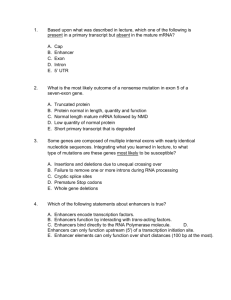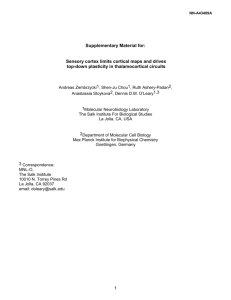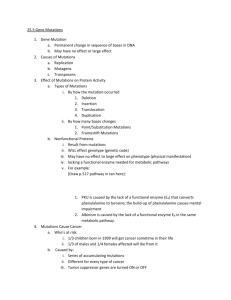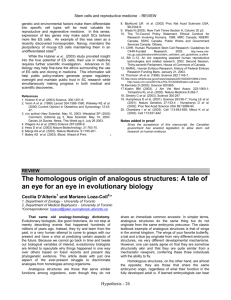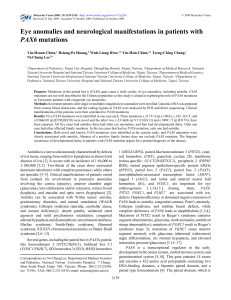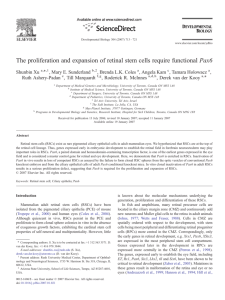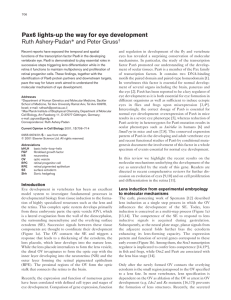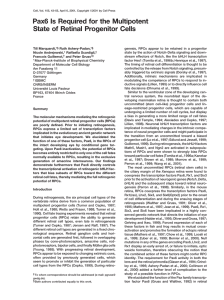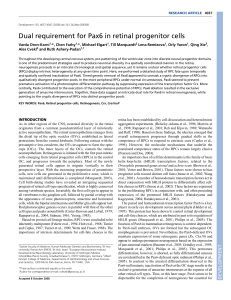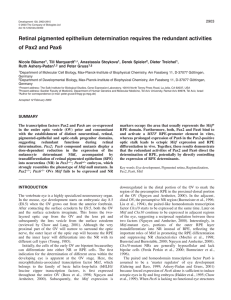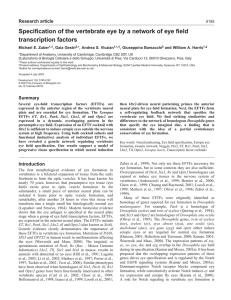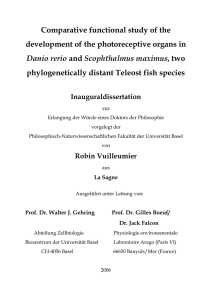In Class Assignment – Jan. 19th
advertisement
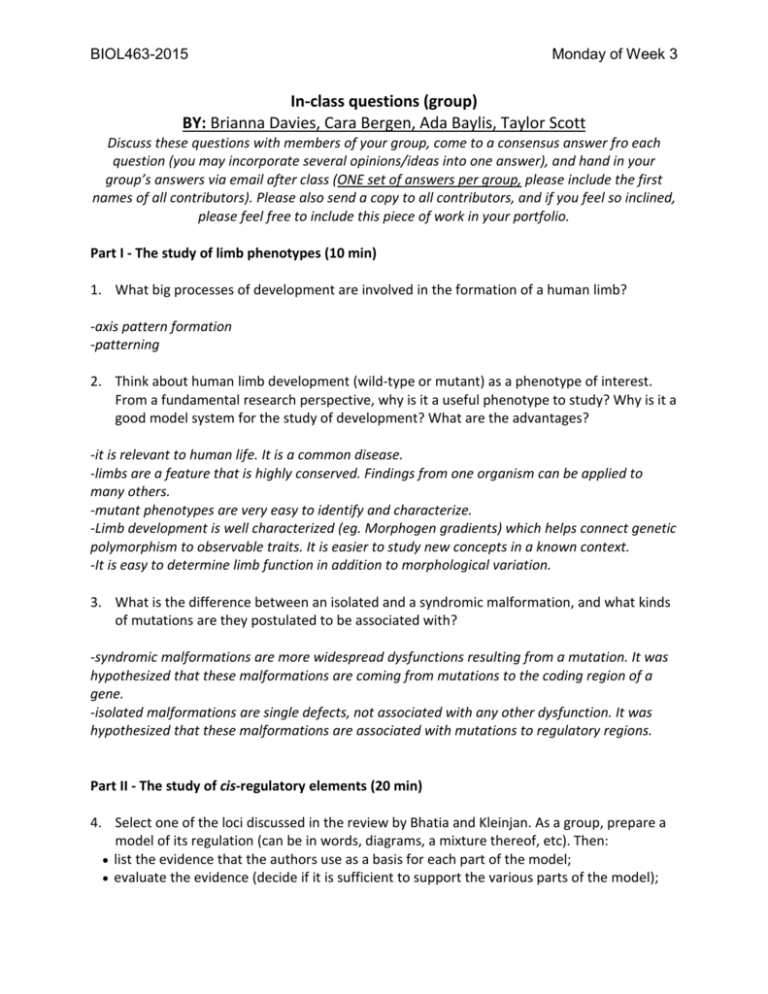
BIOL463-2015 Monday of Week 3 In-class questions (group) BY: Brianna Davies, Cara Bergen, Ada Baylis, Taylor Scott Discuss these questions with members of your group, come to a consensus answer fro each question (you may incorporate several opinions/ideas into one answer), and hand in your group’s answers via email after class (ONE set of answers per group, please include the first names of all contributors). Please also send a copy to all contributors, and if you feel so inclined, please feel free to include this piece of work in your portfolio. Part I - The study of limb phenotypes (10 min) 1. What big processes of development are involved in the formation of a human limb? -axis pattern formation -patterning 2. Think about human limb development (wild-type or mutant) as a phenotype of interest. From a fundamental research perspective, why is it a useful phenotype to study? Why is it a good model system for the study of development? What are the advantages? -it is relevant to human life. It is a common disease. -limbs are a feature that is highly conserved. Findings from one organism can be applied to many others. -mutant phenotypes are very easy to identify and characterize. -Limb development is well characterized (eg. Morphogen gradients) which helps connect genetic polymorphism to observable traits. It is easier to study new concepts in a known context. -It is easy to determine limb function in addition to morphological variation. 3. What is the difference between an isolated and a syndromic malformation, and what kinds of mutations are they postulated to be associated with? -syndromic malformations are more widespread dysfunctions resulting from a mutation. It was hypothesized that these malformations are coming from mutations to the coding region of a gene. -isolated malformations are single defects, not associated with any other dysfunction. It was hypothesized that these malformations are associated with mutations to regulatory regions. Part II - The study of cis-regulatory elements (20 min) 4. Select one of the loci discussed in the review by Bhatia and Kleinjan. As a group, prepare a model of its regulation (can be in words, diagrams, a mixture thereof, etc). Then: • list the evidence that the authors use as a basis for each part of the model; • evaluate the evidence (decide if it is sufficient to support the various parts of the model); BIOL463-2015 Monday of Week 3 • if applicable, select a part of the model for which we do not (yet) have much supporting evidence. What additional piece(s) of evidence would help strengthen the model? What experiment(s) could you do to obtain them? MODEL: Pax6 coding region mutations can cause aniridia. There are several enhancers for PAX6 within the ELP4 introns. ELP4 is a gene downstream of PAX6. Mutations within the elp4 introns can impact PAX6 expression. - With evidence being the correlation between downstream chromosomal malformation in patients with aniridia who lacked pax6 mutations. -The ELP4 coding product was not associated with aniridia phenotype. -Specific enhancers have for PAX6 have been identified within the ELP4 introns. -Synteny between the PAX6 and ELP4 regions has been observed. AREAS OF IMPROVEMENT -Most of the mutations observed were gross chromosomal malformations. Do more specific mutations to the PAX6 enhancers(in model organisms) lead to the same phenotype? An experiment testing this could use targeted mutatgenesis in model organisms. patients with intact coding regions of the pax6 gene had chromosomal malfunction downstream. 5. What is synteny? How does progress in our identification of cis-regulatory elements help explain some cases of synteny? (And thus making the connection between genome structure, function and evolution relevant?) -Shared physical location of DNA regions on the same chromosome, which tend to be inherited together, in the same order. -As identification of cis regulatory elements progresses, our understanding of synteny increases because the co-locailzation of DNA regions is often required for regulation if one of them is a cis regulatory regions. Part III - Where do the cases are from, and who is the information for? (10 min) 6. Think about all the research conducted on human limb malformation. How do you think the subjects for the study were recruited? How do you think the information gained from these studies was disseminated? Who had access to it? Who could it be useful or interesting for? How are the phenotypes under study depicted? OR: (please answers only one of Q6 or Q7, not both) 7. Understanding human “pathologies” that have a genetic basis is almost always listed as one of the benefits of uncovering the genetic and molecular mechanisms that cause a given BIOL463-2015 Monday of Week 3 phenotype. How does the knowledge obtained in this field benefit the patients/subjects? How does it benefit the community at large? -Patients are directly benefited through genetic counseling, treatments that may be developed and diagnostic procedures, prevention. The community benefits from the improvements on treatment, diagnostic, improved health care efficiency from the mentioned diagnostic advances. This can lead to prevention as well as reduced health care costs. At home questions (individual) Please answer this questions individually, any time before Wednesday’s class, and post your answers on your portfolio/blog in the “informal posts”. 1. Write one coherent paragraph, aimed at the general public, that summarize the main points that you and your group discussed today. 2. What was the hardest part of answering question 1? BIOL463-2015 Monday of Week 3 There are PAX6 involved in eye development and other processes, SOX9 that is involved in just about everything from chondrogenesis to pancreas development to sex-reversal phenotypes, the famous SHH with its ZRS regulatory region, the HBA locus and blood disorders, the HOXD cluster (which we will look at in a lot of detail in weeks 7-8), and OCA2, one of the genes controlling eye colour. 3. 4. Select one of the loci described in the paper and be prepared to briefly explain one aspect of its regulation. How could you use a controlled experiment, a correlational study, and an observational/discovery-based study to further investigate its regulation?
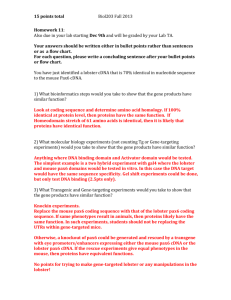
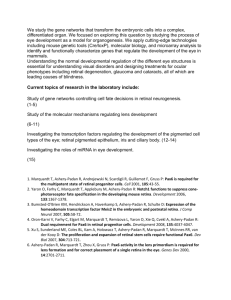



![Anti-PAX6 antibody [AD2.38] ab78545 Product datasheet 5 Abreviews 4 Images](http://s2.studylib.net/store/data/012574010_1-377b34cd10d44803d0297b3fb06ab73a-300x300.png)
